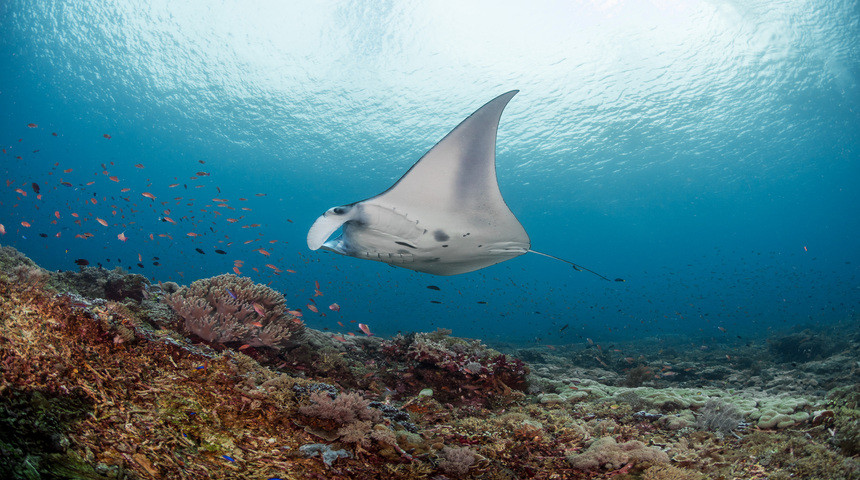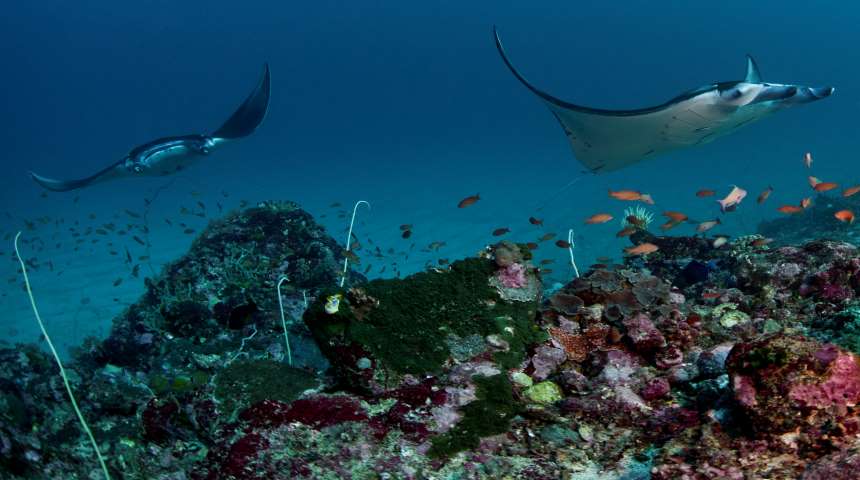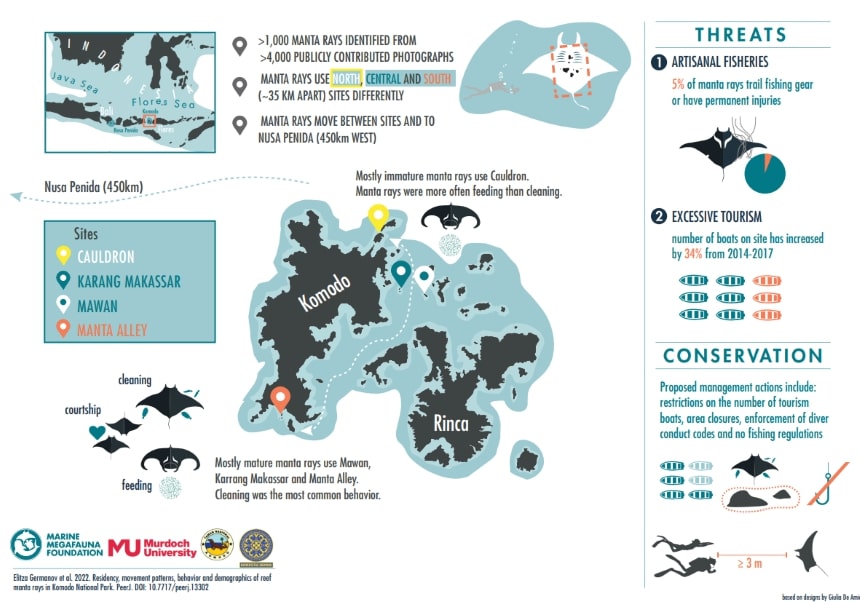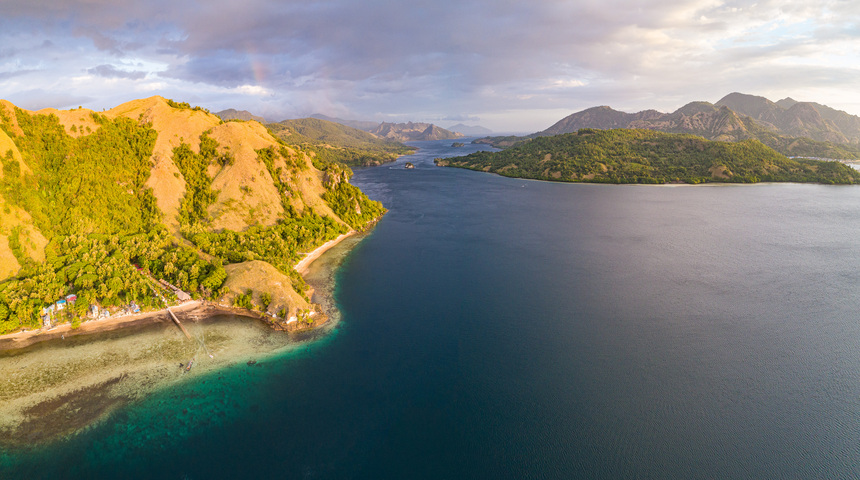
Scientists from Murdoch University and the Marine Megafauna Foundation have reported large numbers of manta rays in the waters of Komodo National Park in Indonesia, suggesting the area may hold the key to regional recovery of the threatened species.
Led by Dr Elitza Germanov from the Centre for Sustainable Aquatic Ecosystems at Murdoch’s Harry Butler Institute, researchers teamed up with the dive operators serving the 200 km sq UNESCO World Heritage Site to source identification photographs of manta rays visiting the parks waters and submit them to MantaMatcher.org - a crowd-sourced online database for manta and other rays. Most of the photographs came from just four locations from over 20 commonly visited by tourism boats.
“I was amazed by how receptive the local dive community was in helping collect much needed data on these threatened animals,” Dr Germanov said.
“With their support, we were able to identify over 1,000 individual manta rays from over 4,000 photographs.”
Reef mantas (Mobula alfredi), which grow up to 5m, are identified by their unique and sometimes striking abdominal patterns. They tend to reside and feed in shallow, coastal habitats, and visit ‘cleaning stations’ on coral reefs to have parasites, or dead skin picked off by small fish. ‘Courtship trains’ have also been observed adjacent to cleaning stations.

In Komodo National Park, manta rays are present year-round, challenging the famous Komodo dragon as the most sought-after megafauna for visitors. Indonesia is ranked second in the world for manta ray tourism, with an estimated value of US$15 million per year.
Principal scientist and co-founder of the Marine Megafauna Foundation, Dr Andrea Marshall, saw the potential to engage the public with data collection for these threatened and understudied marine animals and worked with software company WildMe to develop online wildlife database platform MantaMatcher.org to match and catalogue manta rays in different populations around the world.
“People love manta rays - they are one of the most iconic animals in our oceans,” Dr Andrea Marshall, Marine Megafauna Foundation
“The rise of the number of people engaging in SCUBA diving, snorkelling and the advent of affordable underwater cameras meant that photos and videos taken by the public during their holidays could be used to quickly and affordably scale data collection,” Dr Marshall said.
The photographs and accompanying time and location information was used to construct sighting histories of individual manta rays at Komodo NP, which were then analysed with statistical movement models which predict the likelihood that manta rays are inhabiting or traveling in between specific sites.
The study found some manta rays moved around the park and others as far as the Nusa Penida Marine Protected Area 450 km to the west, but overall, manta rays showed individual preferences for specific sites within the park.

“I found it very interesting how some manta rays appear to prefer spending their time in some sites more than others, even when sites are 5km apart, which are short distances for manta rays,” Dr Germanov said.
“This means that manta rays which prefer sites where fishing activities continue to occur, or that are more popular with tourism, will endure greater impacts.” Dr Elitza Germanov, Murdoch University
Fishing activities have been prohibited in many coastal areas within Komodo NP, including manta ray habitats, since 1984, and in 2014 Indonesia declared nationwide protection for two manta ray species, including Mobula alfredi.
However, due to illegal fishing activity and movements into heavily fished waters, manta rays continue to face threats from fisheries. About five per cent of Komodo’s manta rays have permanent injuries that are likely the result of encounters with fishing gear.
In 2019, limits were placed on the number of boats and people that visit one of the most famous manta sites in Komodo NP, but during her study Dr Germanov found that tourism activities grew by 34 per cent, increasing the risk that boating, diving and snorkelling will negatively impact on manta rays and their habitats.
Ande Kefi, an employee of the Komodo National Park involved with the study, said the park should create measures to limit the disturbance at all tourist sites.
“This study shows that the places where tourists commonly observe manta rays are important for the animals to feed, clean and mate,” he said.
“I hope that this study will encourage tourism operators to understand the need for the regulations already imposed and increase compliance.”

Limiting the number of tourism boats allowed at one time at manta ray aggregation sites, and implementing mandatory codes of conduct for diving and snorkelling with manta rays, were proposed as ways to minimise impact from tourism.
It was also highlighted that marine-protected areas large enough to host important manta ray habitats are a beneficial tool for manta ray conservation.
Despite Indonesia’s history with intensive manta ray fisheries, Komodo National Park still retains large manta ray aggregations that, with careful ongoing management and threat reduction, will benefit regional populations.
View a video Q&A PeerJ conducted with Dr Elita Germanov.
Images courtesy Dr Elitza Germanov, Dr Andrea Marshall and Simon Pierce (www.naturetripper.com).
This research supports the United Nations Sustainable Development Goal 14, Conserve and sustainably use the oceans, seas and marine resources for sustainable development.